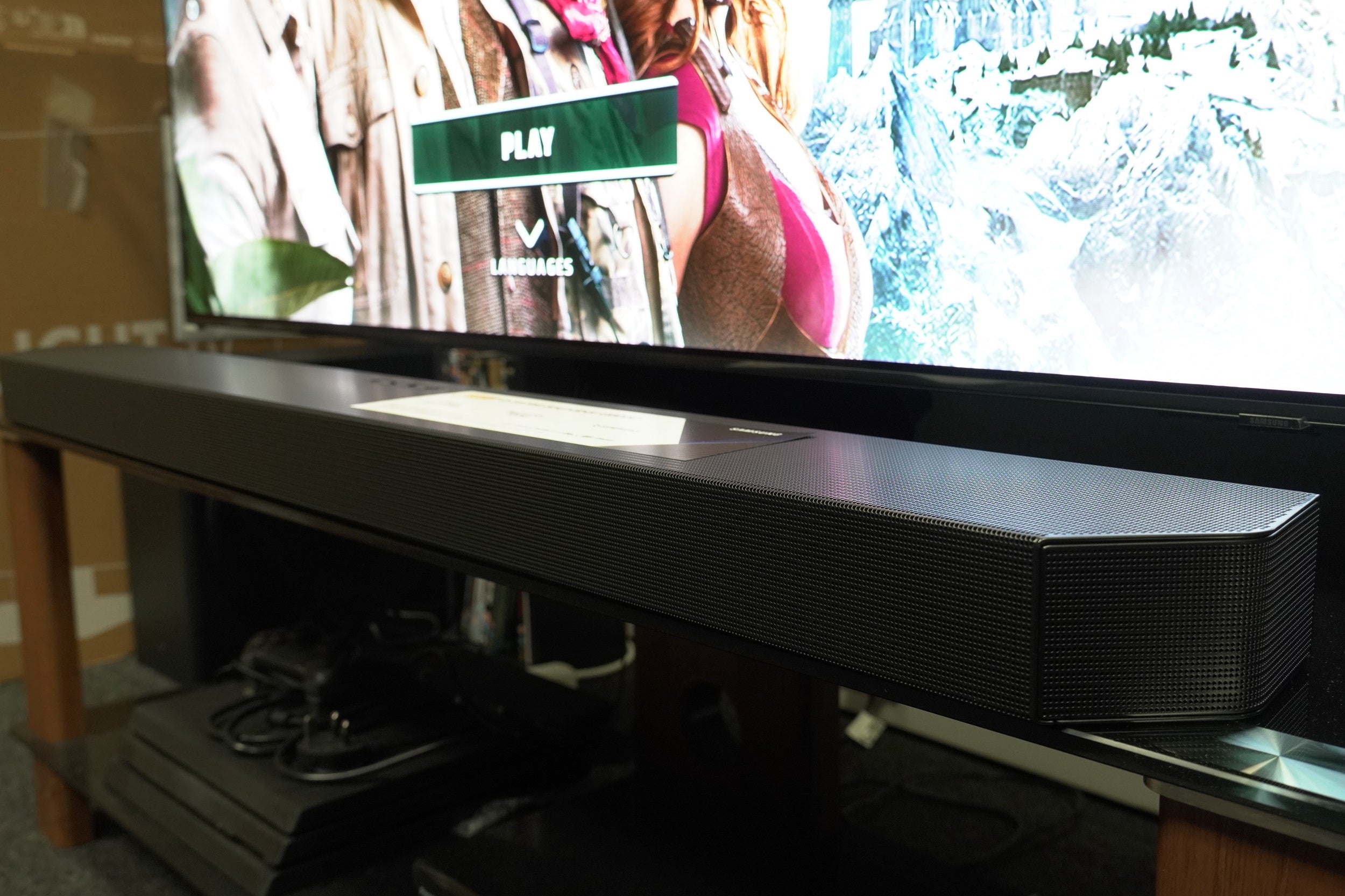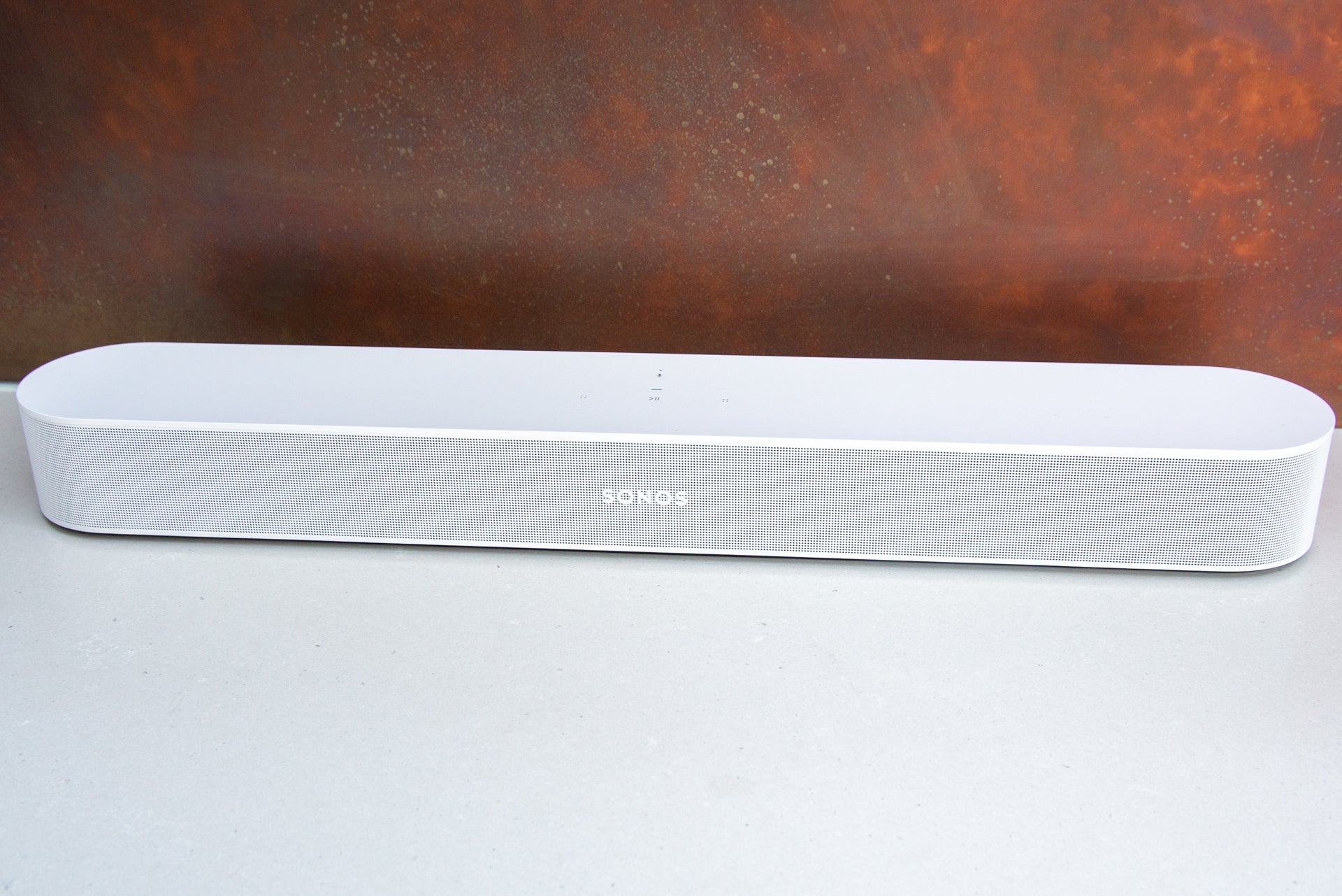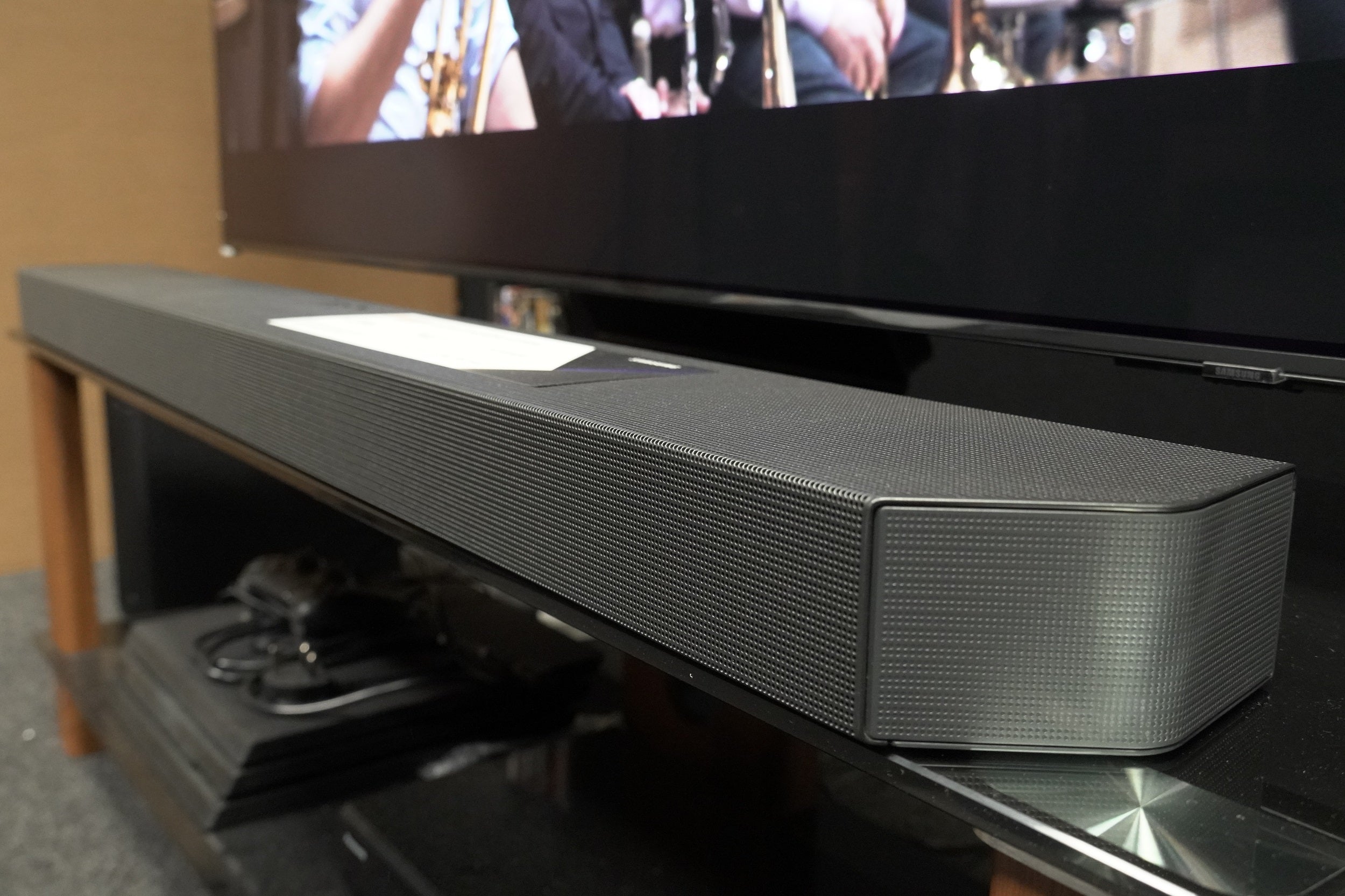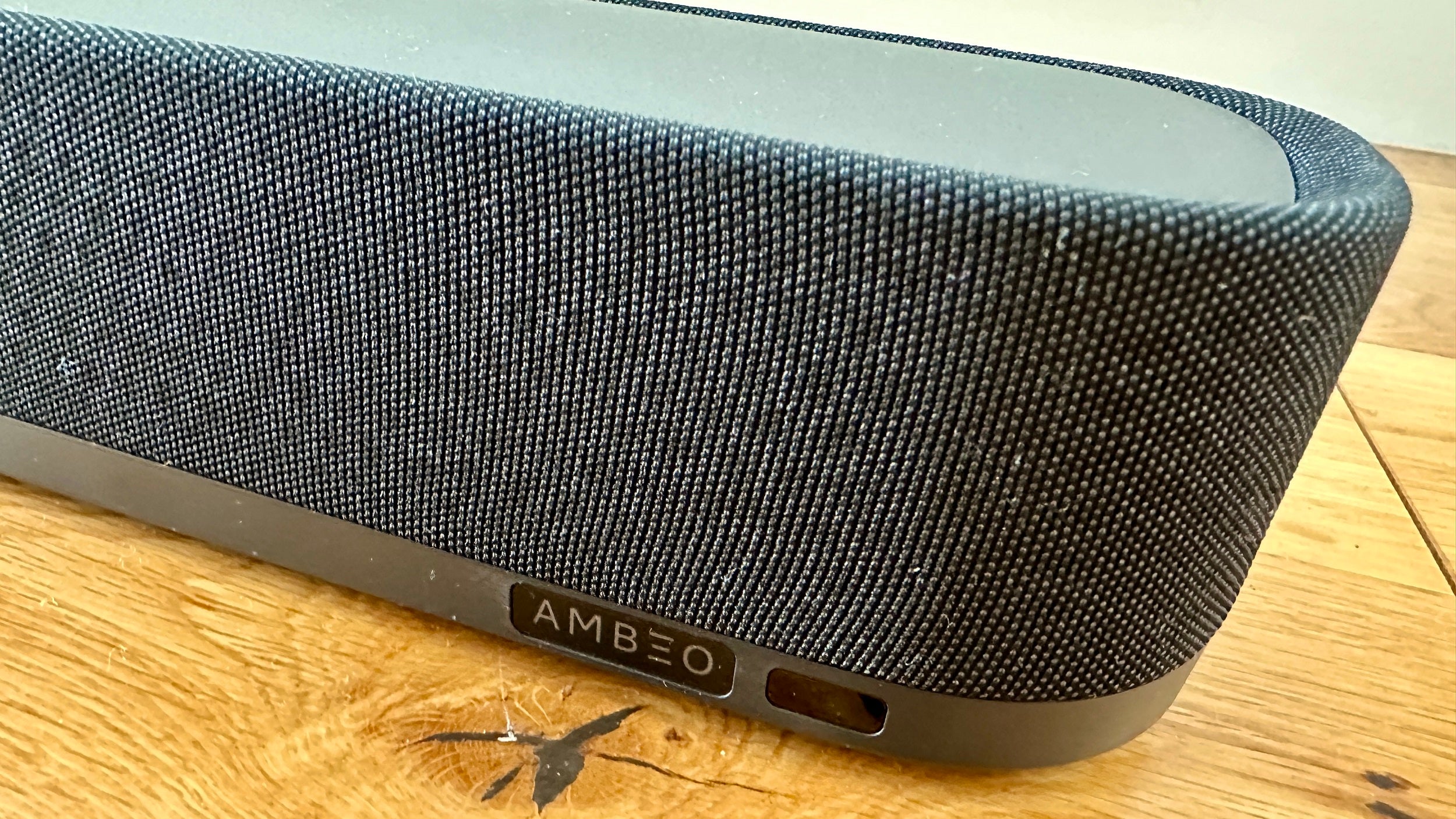LG USC9S Review
LG's Atmos soundbar that's tailor made for the C3 OLED

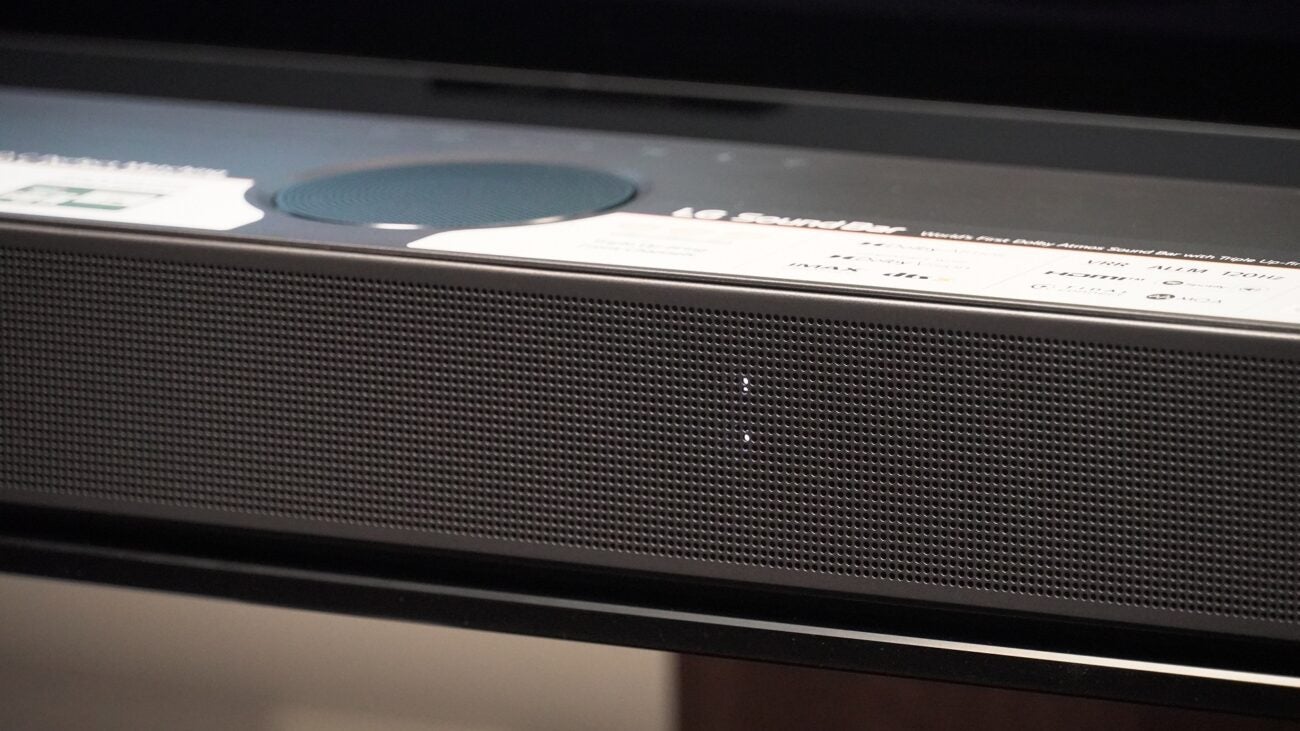




Verdict
LG’s USC9S is a soundbar that’s a tailor-made partner for C2 and C3 OLEDs, bearing a wealth of features and slick integration with LG TVs, but it’s sharp and at times sibilant sound stops it short of a recommendation.
Pros
- Excitement and energy in spades
- Tight integration with LG TVs
- Wealth of features
Cons
- Sharp and lean tone
- Near pointless display
- Underwhelming music performance
- WOW Orchestra integration could be better
Availability
- UKRRP: £999
- USARRP: $999.99
- EuropeRRP: €1099
- CanadaRRP: CA$999.99
- AustraliaRRP: AU$1499
Key Features
- AudioSupports Dolby Atmos and DTS:X immersive soundtracks
- WOW OrchestraCombines the LG TV’s speakers with the soundbar for a bigger sound
- 4K/120Hz supportCan pass-through 4K/120Hz signals for high-end gaming
Introduction
LG’s objective for its soundbars is to increase the attach rate with its TVs. After all, if you buy an LG TV, doesn’t it make sense to stick with the same brand to boost the audio?
And that ‘synergy’ is all over the LG USC9S (or SC9 in the US). This is a soundbar designed in tandem with LG’s C3 OLED, packaged with a bespoke wall-mounted bracket to combine them for an all-in-one audio-visual package.
And there’s more symbiosis on the table as LG is putting a bigger emphasis on its WOW audio technologies to combine the interface and sound from the TV and soundbar into one whole.
LG’s soundbars haven’t necessarily hit the heights of its rivals in recent years, so what to make of this latest effort? After testing the soundbar, here are my thoughts.
Design
- Design goes under the radar
- Upfiring centre speaker
- Rather pointless display
Grey and anonymous would be two words to describe the USC9S, and while that may sound unflattering, it is clear this soundbar has no intention of hogging the limelight from the TV.
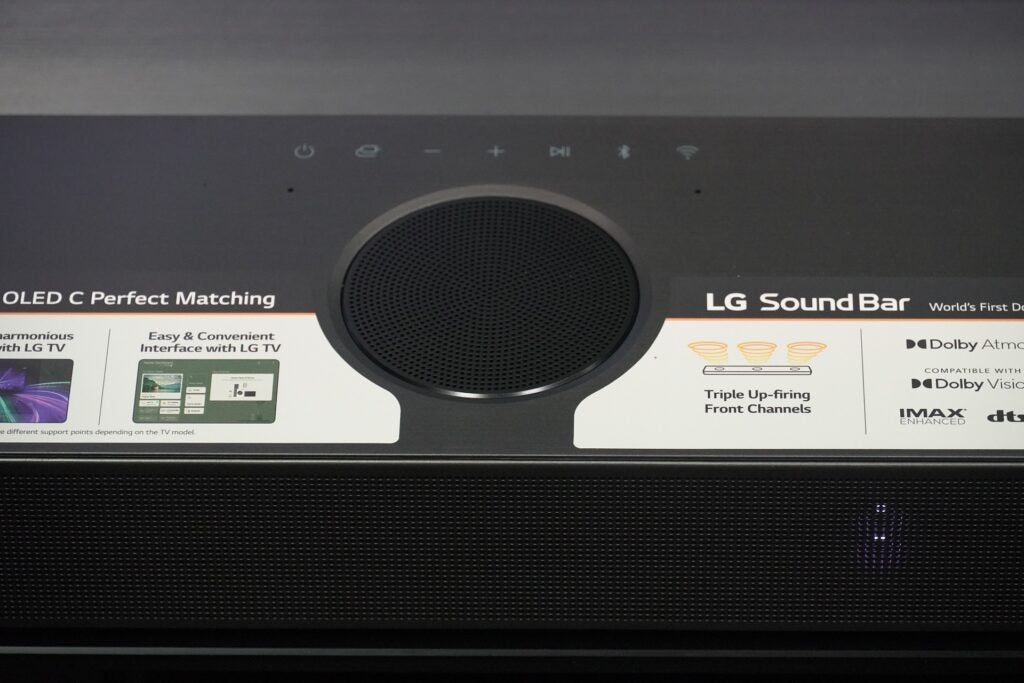
It looks very similar to the main bar from the S80QR soundbar system, though it doubles down on its utilitarian vibe by omitting the Jersey grey acoustic fabric. Like the S80QR it has three upfiring speakers but only two to project Dolby Atmos audio – the centre speaker is dedicated to lifting dialogue onto the screen.
LG has ditched the easy-to-read LCD display for something more impenetrable – essentially a series of dots that are near indecipherable as to what they could mean.
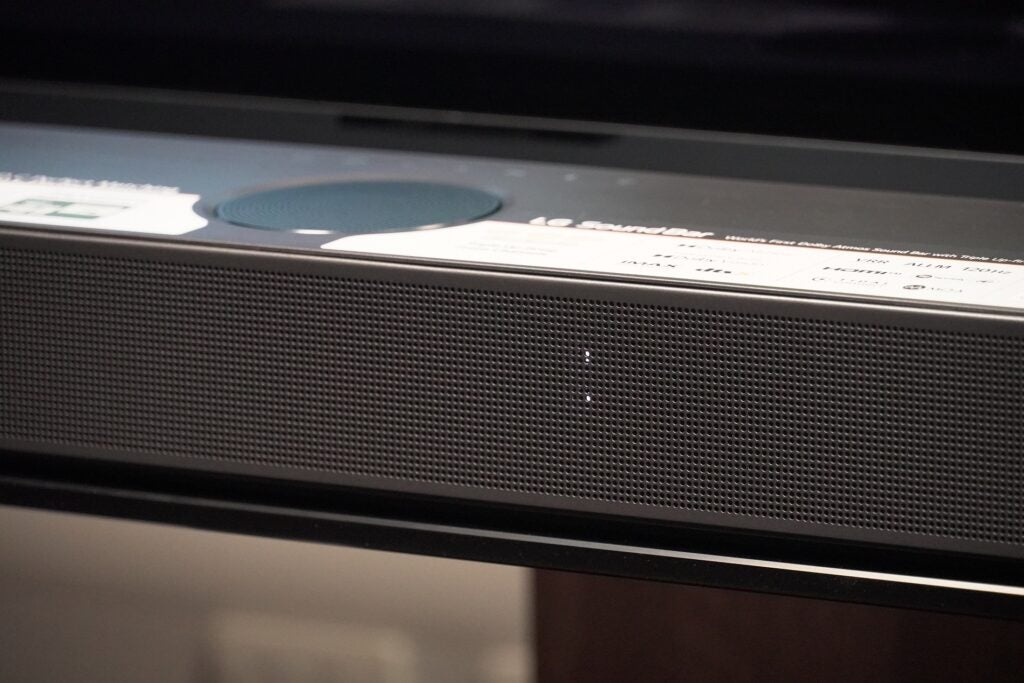
It’s slightly mitigated by the speaker’s voice pronouncements flicking through settings, but you can no longer see what type of soundtrack is playing on the bar itself. I assume the minimal nature of the display is to encourage use of the WOW interface, but that seems an inelegant solution to something that wasn’t a problem.
Connections are in a recessed area on the unit’s underside, with an HDMI input, output (eARC/ARC), digital optical out and a USB input. The accompanying subwoofer seems to be going for the anonymous look too, though its size and weight (7.8kg) suggest it’ll have a hard time hiding out of sight.
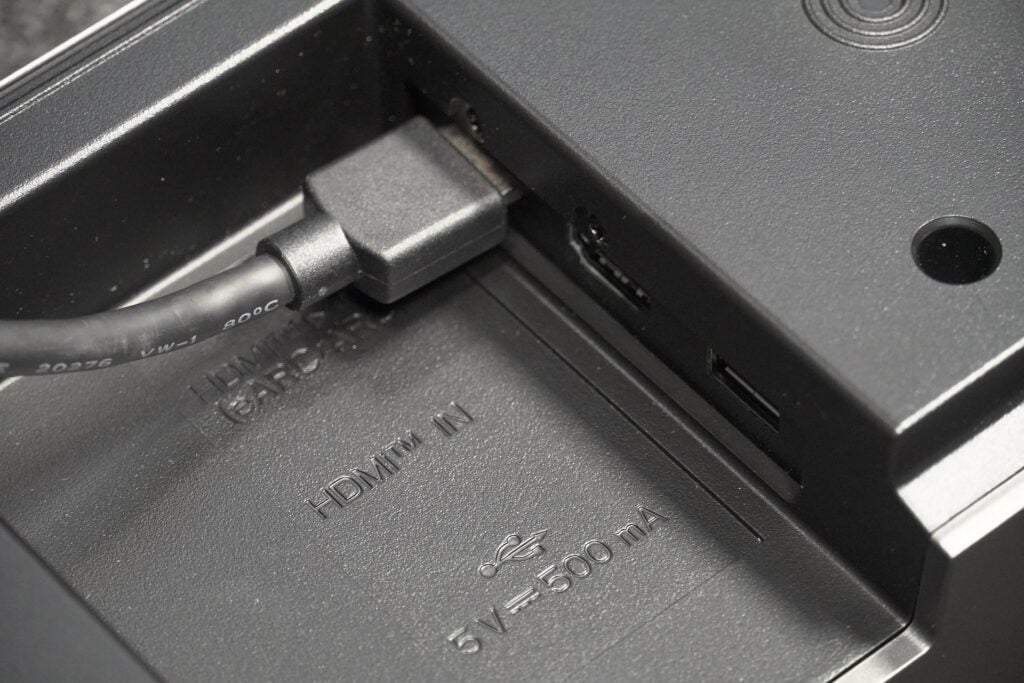
Included is the wall-mount bracket for attaching to the C3 OLED, though I didn’t set that up, using the bar in its more conventional position. The bracket is compatible with both the C2 and C3 OLEDs, and fits with the 55-, 65- and 77-inch models.
The remote is the same one that’s featured with LG’s soundbars for years, mimicking the curved, ergonomic shape of the TV remote though smaller and lighter. Buttons are kept to a minimum and even more minimal is the use of icons over lettering for each button, but the symbols are simple enough to get the gist. It would have been interesting if LG had decided to forgo a remote given all the WOW Synergy going on between the bar and the TV.
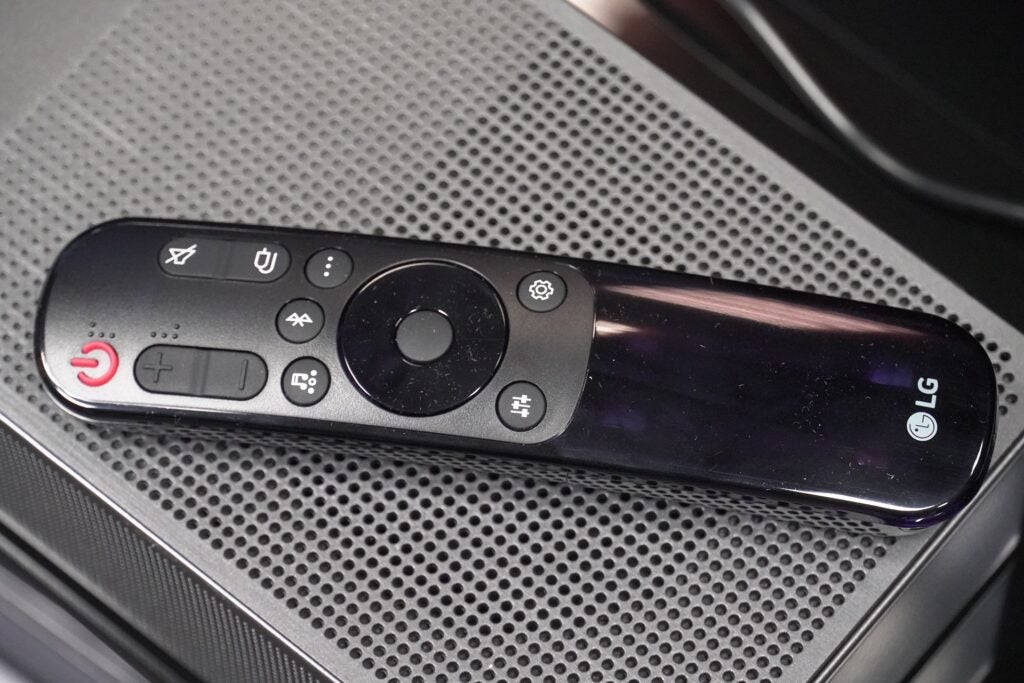
Features
- 4K/120Hz passthrough via HDMI
- Works with Alexa and Google assistants
- WOW synergy with LG TVs
LG’s soundbars tend to go for the full-course meal when it comes to features, and the USC9S is filled to the brim.
Voice assistance includes Alexa and Google Assistant, but since neither are built in, the USC9S needs a link to another compatible device to enable hands-free operation.
Where wireless connections are concerned there is Chromecast, AirPlay 2, Spotify Connect, Tidal Connect (with MQA support) and Bluetooth 5.0 (SBC, AAC). Hi-res audio is supported up to 24-bit/96kHz; and the USC9S can play Dolby Atmos, Dolby Digital, DTS:X, DTS Digital Surround and IMAX Enhanced soundtracks.
It can also passthrough HDR10 and Dolby Vision through the HDMI input, along with VRR and ALLM support. An upgrade from the S80QR is support for refresh rates up to 4K/120Hz for game consoles.
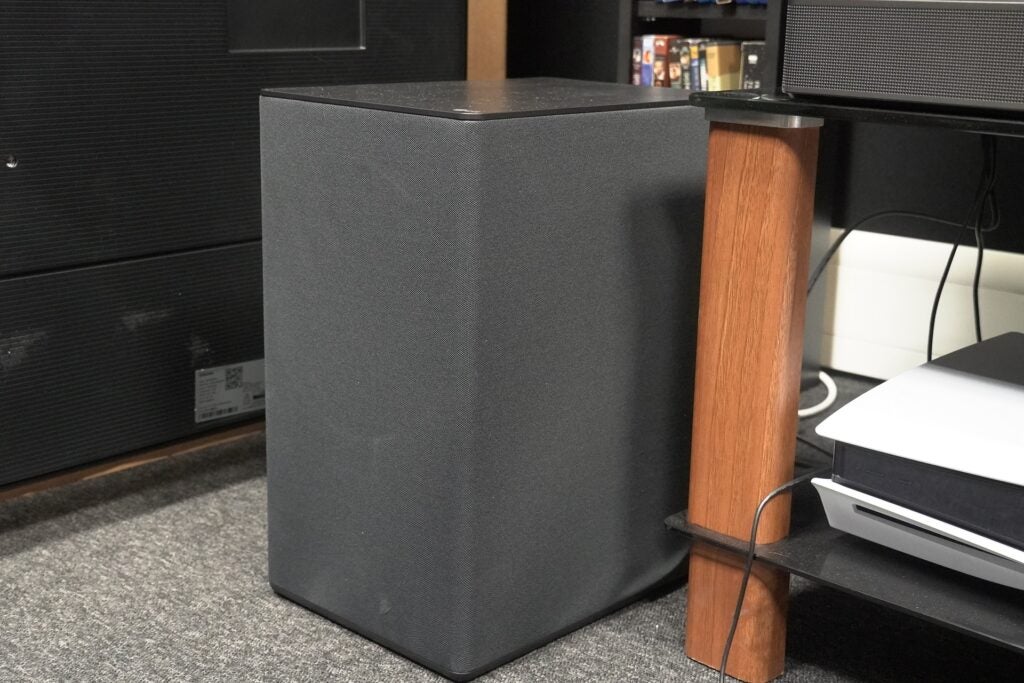
There are eight sound modes in total in IMAX Enhanced, AI Sound Pro, Clear Voice Pro, Music (developed by LG’s audio partner Meridian), Standard, Cinema, Sports, and Bass Blast. With A.I. Room Calibration the bar can assess the acoustic properties of a room and adjust the sound.
In WOW Interface and WOW Orchestra come the reasons LG wants you to invest in this bar over its rivals. WOW Orchestra is LG’s version of Samsung’s Q-Symphony, which sees the speakers in the TV and soundbar work in concert to expand the soundstage. I’ll go into detail on the effect that has in the next section.
WOW Interface aims to make it easier to control the TV and soundbar by sharing the same interface. I must admit I wasn’t all that clear as to how to bring up the soundbar’s interface when connected to an LG C3 OLED, but it appears you can reach it by heading to the Home Hub (which isn’t made clear in the manual). There’s a far quicker (and simpler) way of changing the modes by bringing up the ‘quick settings’ menu on a 2023 LG TV.
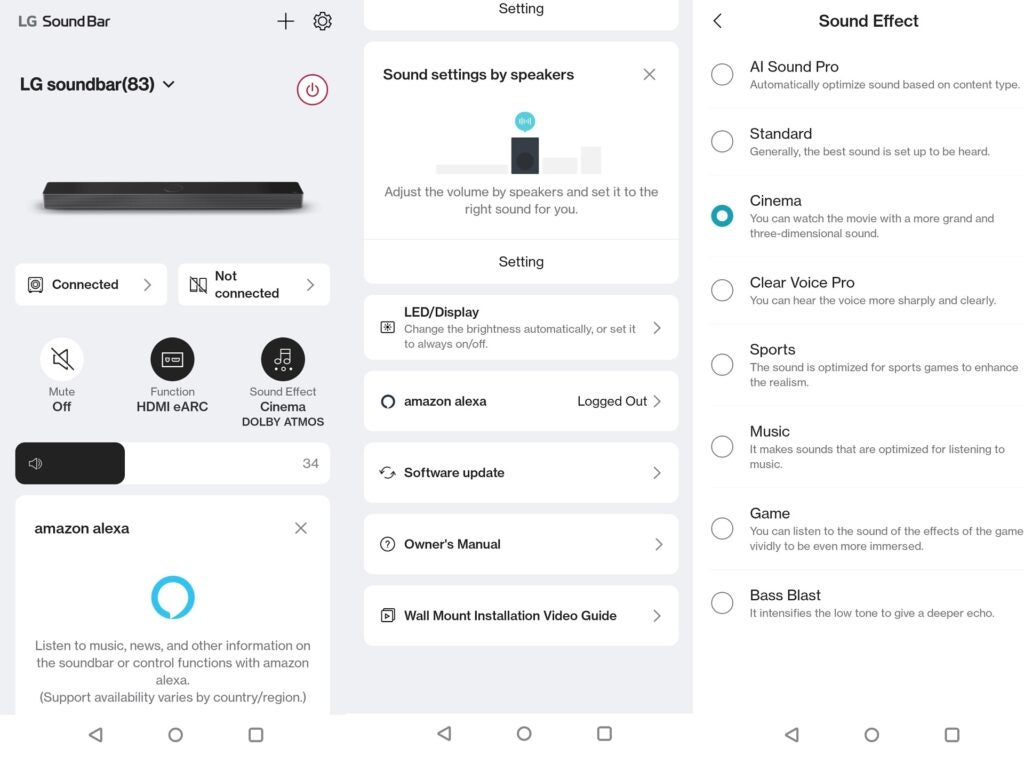
There’s also the LG Sound Bar app, which became my preferred mode of operating the bar, mainly because it has all the information needed (and more). You can switch between audio modes and inputs, check what type of audio is playing (Atmos, DTS:X, PCM, etc.), adjust the volume of each speaker, control volume/music and add more speakers to the system. It is the most comprehensive way of managing the bar and is simple to use.
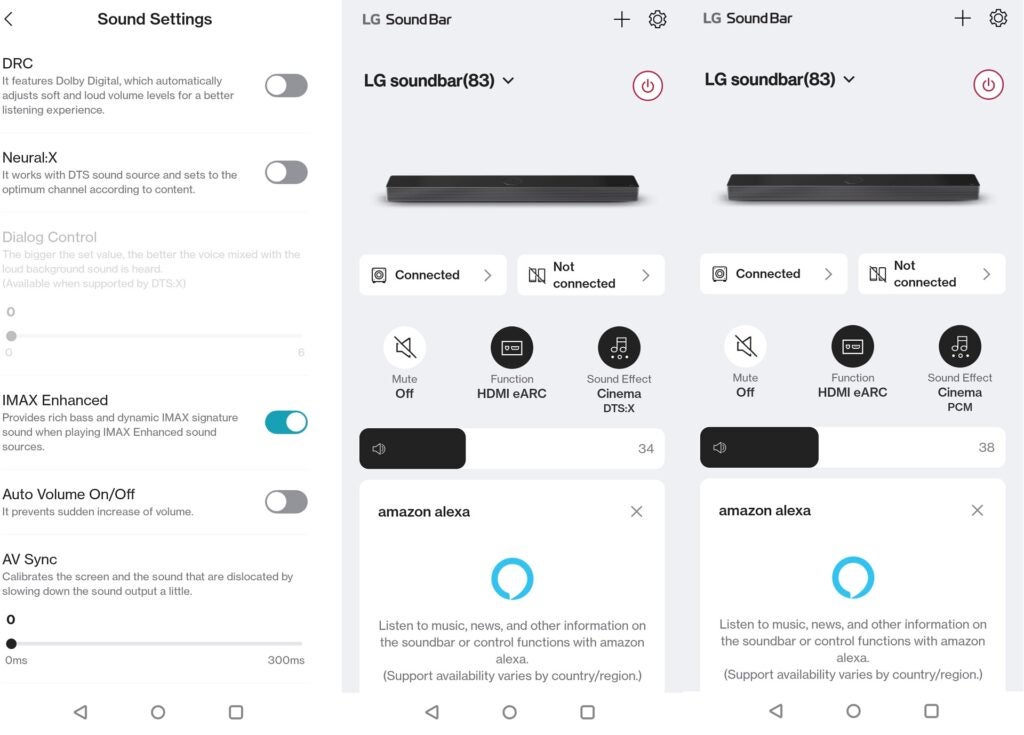
If you do want to add more speakers, the USC9S is compatible with the SPQ8-S rear speaker package. It is available in the US for $99.99 and in the UK at Richer Sounds.
Sound Quality
- Energetic and exciting sound
- Punchy, powerful bass
- Overly sharp tone
Can a soundbar be cinematic in scale but also ill-disciplined in tone? That’s where the USC9S finds itself, a soundbar capable of adding heft and scale to any TV it’s partnered with, but also suffers from issues that have plagued LG’s TVs and soundbars of late.
But let me start with the good news. The upfiring centre works well in carving out a space for dialogue when watching Daisy Jones & the Six on Prime Video. Dialogue is elevated and sits on the screen rather than feeling as if it’s coming from slightly below.
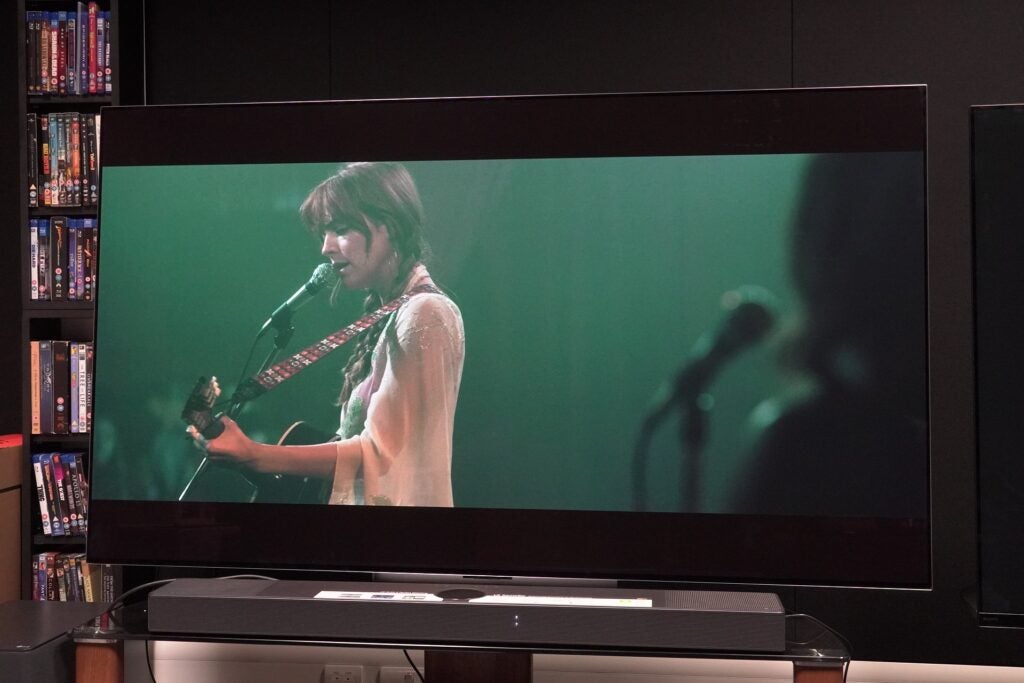
I find the settings for the ‘height’ channel rather conservative – nudge it up to about ‘+3’ and you really start to hear both clarity and separation of dialogue from the rest of the track in a film like Interstellar, where there are scenes where it’s hard to distinguish between what’s being said and the film’s cacophonous sound design.

And dialogue sounds clear and crisply conveyed for the most part, whether it’s in the action scenes of Tenet, the quieter and tense scenes in Nope, or the more talkative scenes of characters in Industry on the iPlayer. Choosing Standard mode places more emphasis on dialogue, making it easier to sift through what’s said in dialogue-heavy programming.
The USC9S treats its audience to a big and expansive soundscape. This isn’t true immersion without the rear speakers to assist, but there’s depth to the opening section of Ghost in the Shell as the camera moves through the cityscape, and when K’s spinner lands at the beginning of Blade Runner 2049, I can hear it descend from above the TV clearer than I can on the Sony HT-A5000.
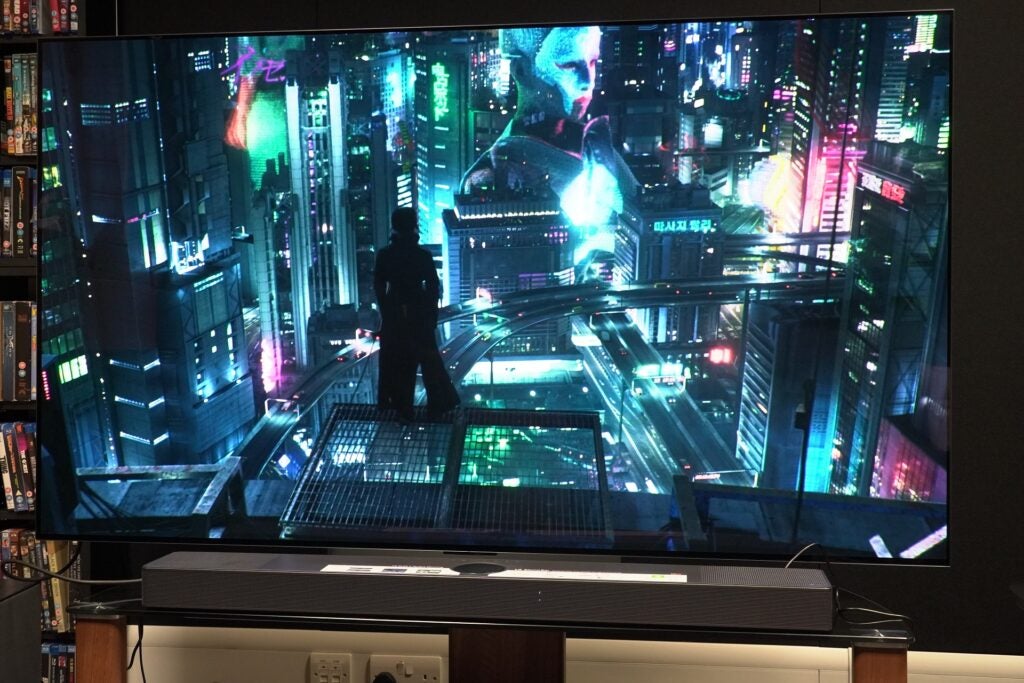
There’s a propulsive energy to the Malta chase in Jurassic World: Dominion (DTS:X), and the mix of the effects – the thrum of Owen’s motorbike as he races through the city, the chasing footsteps of the Raptors, and Michael Giacchino’s score all mesh and build towards a kinetic and exciting scene that was so thrilling I ended up watching it again.
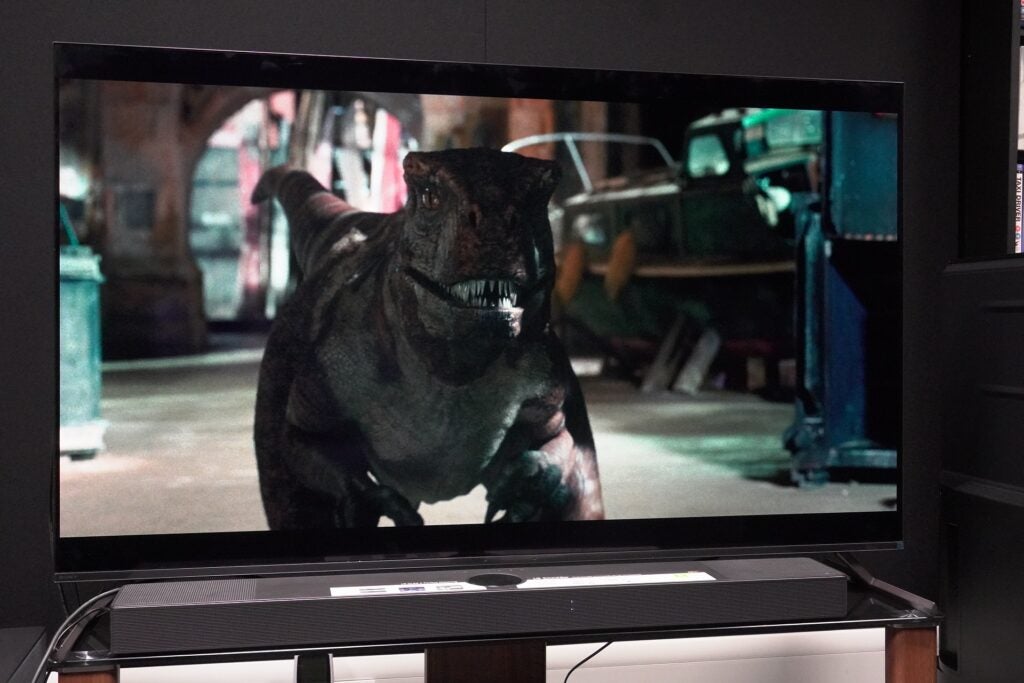
And the accompanying subwoofer is a brute, but in a good way. It does sound odd at first – reminiscent of LG’s Éclair subwoofer in that it sounds big, but seems to have neutered the rumbly vibrations from the drive unit.
The subwoofer offers plenty of slam, producing a powerful, room-shaking experience that’s explosive with a film like Interstellar where I can feel the ship stressing and buckling as it descends through the atmosphere to land on the water planet. Or in Dominion, where the low frequencies provide heft to give the dinosaur fight scenes impact.
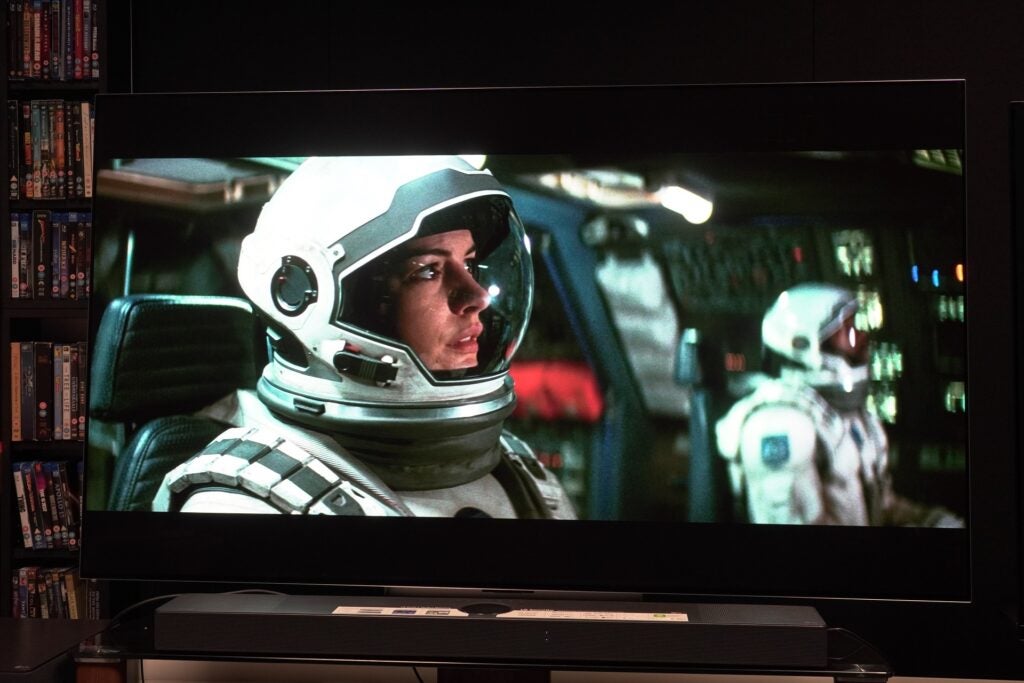
The WOW Orchestra feature works well enough in synchronising the speakers in the bar with that of the TV. Having tried it with both a C3 and G3 OLED, it presents a similar effect as Samsung’s Q-Symphony with a crisper tone to sounds that emanate from the screen, which isn’t too distracting and even normal given the difference in the size of the drivers. The placement of sounds sits on the screen and sounds as if it’s coming from where it should be.
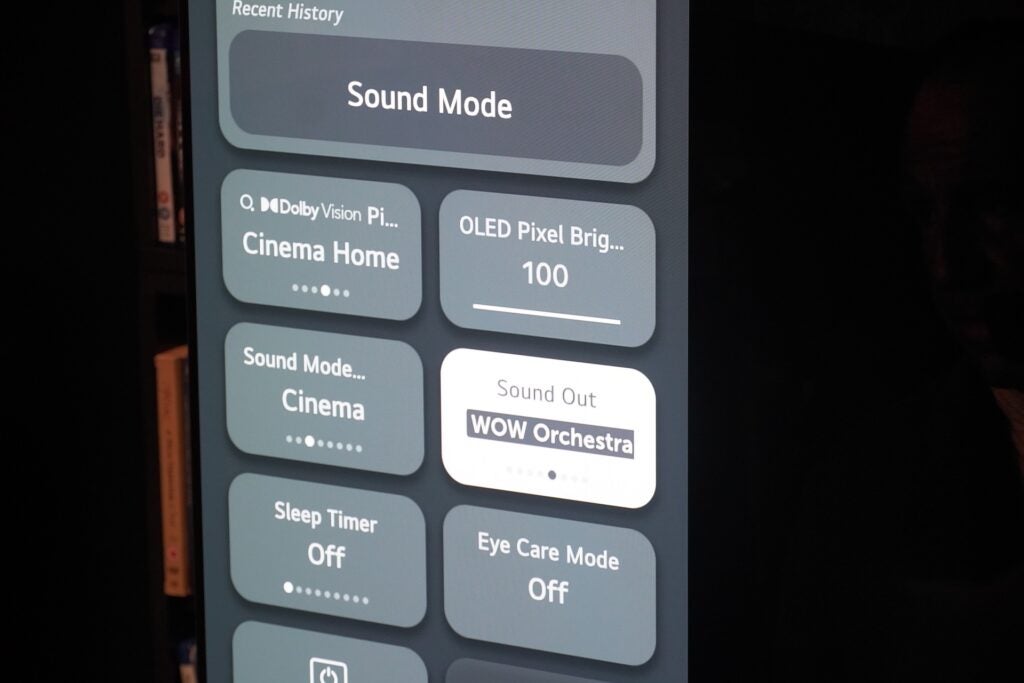
However, there’s a slight lag when pausing/restarting content in WOW Orchestra mode. There’s also what appears to be a different crossover with the sub. There’s not the same level of weight to effects in Ghost in the Shell, the soundstage is thinner and smaller with WOW Orchestra engaged with more power and heft when listening to the film in its ‘normal’ eARC mode.aaa
And though I mentioned that the LG soundbar treats dialogue with clarity, it is susceptible to sibilance. Riley Keough’s voice in Daisy & the Six can be too sharp (both in WOW and eARC modes); and it’s a similar effect with female characters of Ghost in the Shell.
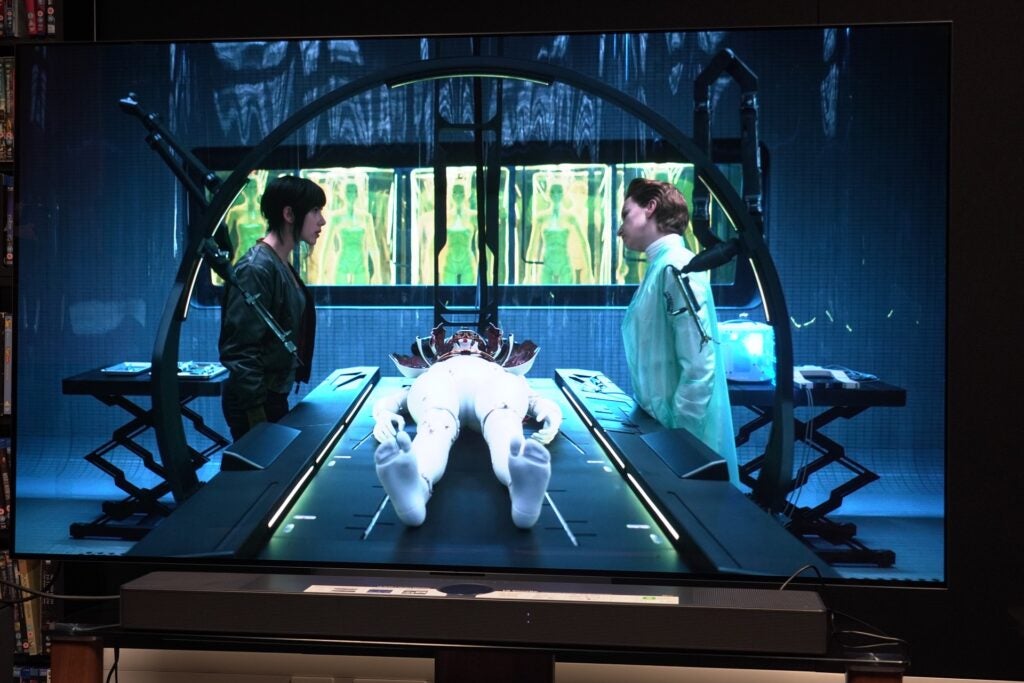
This becomes a bigger issue at higher volumes, but even at lower levels (around 35), there are still traces of sibilance. I can hear it in the baseline test in Blade Runner 2049 as well as the conversation between K and Sapper at the farm, so it isn’t just female voices that are affected.
The bar can be too sharp and acute at the top end of the frequency range; the ringing sound of the chains in the dinosaur pit in Dominion and gunshots are harshly reproduced and grate a little.
The USC9S is also not the subtlest-sounding bar either, but I doubt many will be bothered given the excitement it’s capable of.
The LG USC9S isn’t overly convincing with music. Again, it sounds too crisp – not coarse but teetering towards sibilance with voices and treble notes. The Music mode sounds too compact, hemmed in within the bar.
The balance across the frequency range doesn’t sound right to my ears either. Streaming Norah Jones’ I Don’t Know When from Tidal, the bar doesn’t seem to project voices out from the bar – the instruments and her voice get mixed up with, leading to a crowded sense of space. This isn’t for every track, of course, and there are songs that sound good, but more often the LG is an awkward combination of too bright, shrill, and excitable.
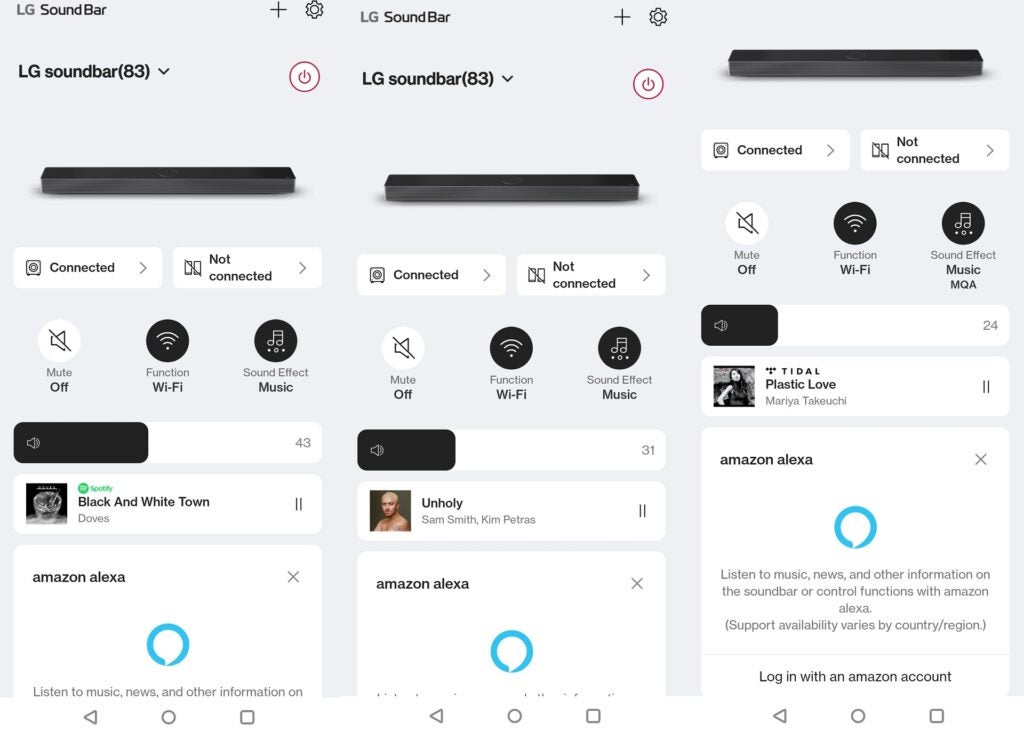
The Bluetooth performance is rather weak too. The volume needs to be turned up to get anywhere close to how music sounds over Wi-Fi, and the warmth of the Bluetooth connection affects its sense of detail while bass is muted. Switch to Wi-Fi and there’s better balance and punchiness, but there’s also the issues I noted previously.
Flitting through the modes for a better balance and none allow music to really strut its stuff. AI Sound Pro highlights everything and loses out on voices, while Cinema is very processed, as if it’s trying to be 3D. What does it say about the tuning of the Music mode when Standard turns out to be the best of the bunch?
Latest deals
Should you buy it?
If you’ve got a C2 or C3 OLED TV:
The LG USC9S is tailor made for LG’s C-series OLEDs, even more so if you’re wall-mounted the TV.
You’re sensitive to sibilance:
I can see what LG is trying to do, but the USC9S could do with toning down its levels of sharpness.
Final Thoughts
There’s a tinge of disappointment about the LG USC9S soundbar, especially viewed in the context of its £1000 price. If we’re mainly focusing on pairing this bar with the LG C3 or C2 OLED, then it easily serves up a better sound than either of those TVs can muster, but it’s compromised by sounding too sharp.
And that’s a shame as with Dolby Atmos and DTS:X soundtracks the USC9S offers an exciting and thrilling sound. The upfiring centre channel for dialogue is useful, and WOW Orchestra feature works in combining the TV and bar’s speakers, but the crossover for the bass could be managed better.
Given the WOW bracket packaged with the bar, this is a niche model for those with an LG C2 or C3 OLED, in a similar guise to the GX wall-mount soundbar for the G-series OLED. A decent effort, but a smoother tone and better performance with music would have catapulted this bar to recommended territory. Check out our best soundbar list for more options.
How we test
We test every soundbar system we review thoroughly over an extended period of time. We use industry standard tests to compare features properly. We’ll always tell you what we find. We never, ever, accept money to review a product.
Find out more about how we test in our ethics policy.
Tested across a month
Tested with real world use
Tested with several TVs
FAQs
Yes, the LG USC9S soundbar can play DTS:X, DTS-HD Master Audio and other DTS audio formats. However, you’ll need to make sure that your TV can pass-through DTS audio otherwise it’ll appear as PCM/LPCM audio.
Full specs
Sustainability
Trusted Reviews’ holds the fact that global warming is not a myth as a core value and will continuously endeavour to help protect our planet from harm in its business practices.
As part of this mission, whenever we review a product we send the company a series of questions to help us gauge and make transparent the impact the device has on the environment.
We currently haven’t received answers to the questions on this product, but will update this page the moment we do. You can see a detailed breakdown of the questions we ask and why in our sustainability info page.

